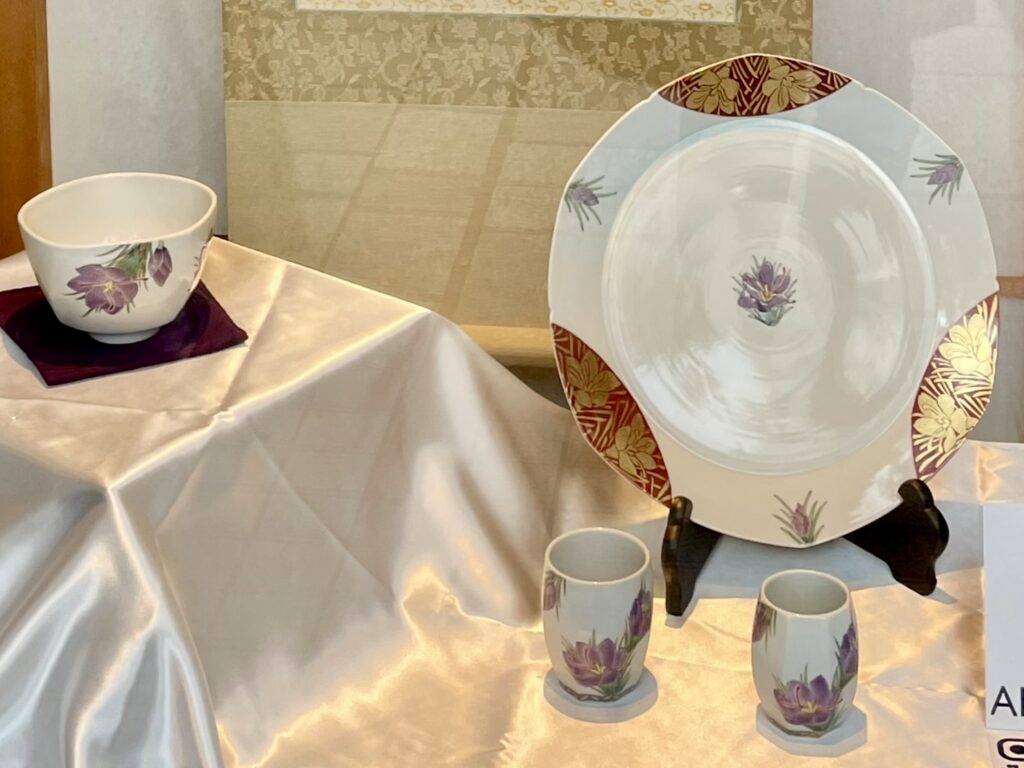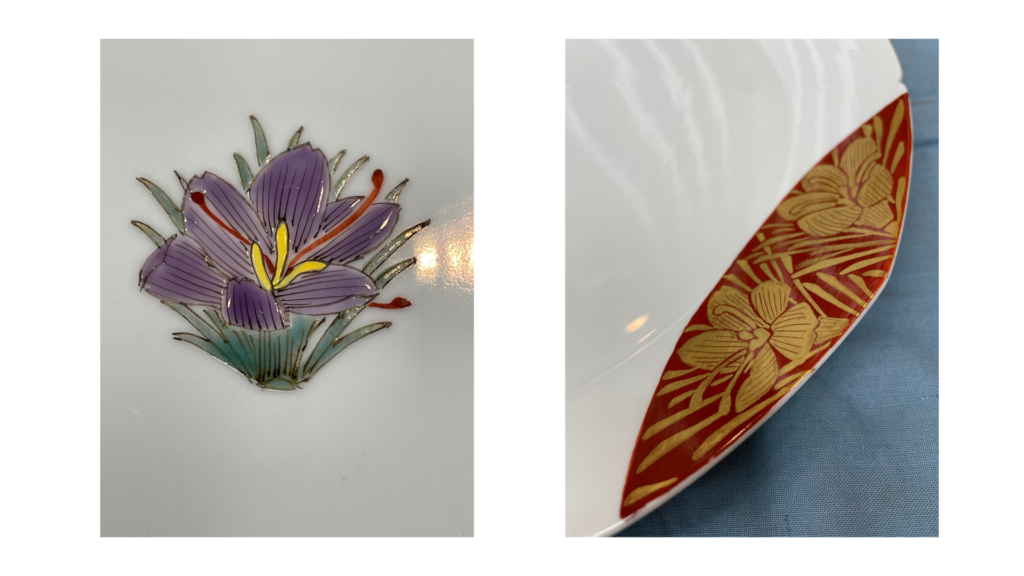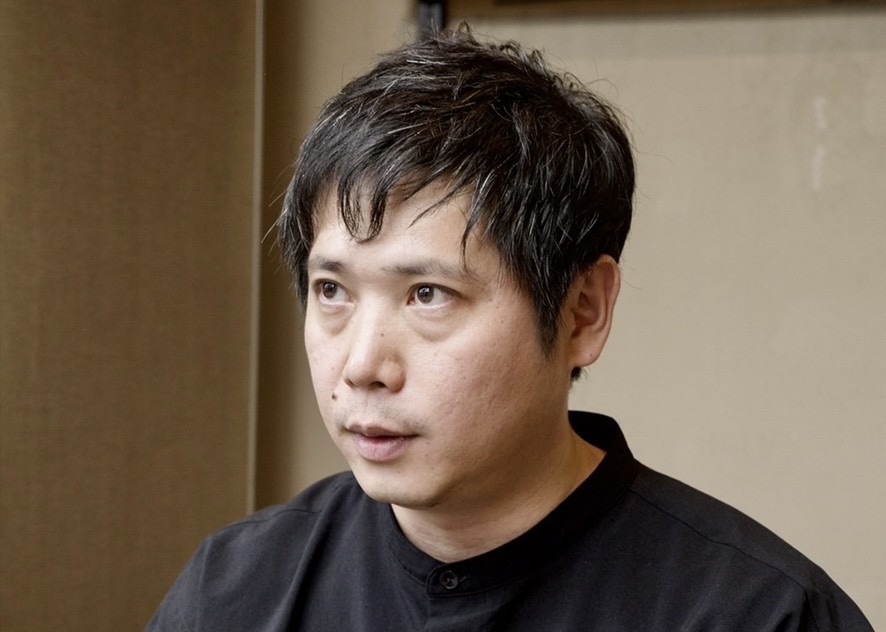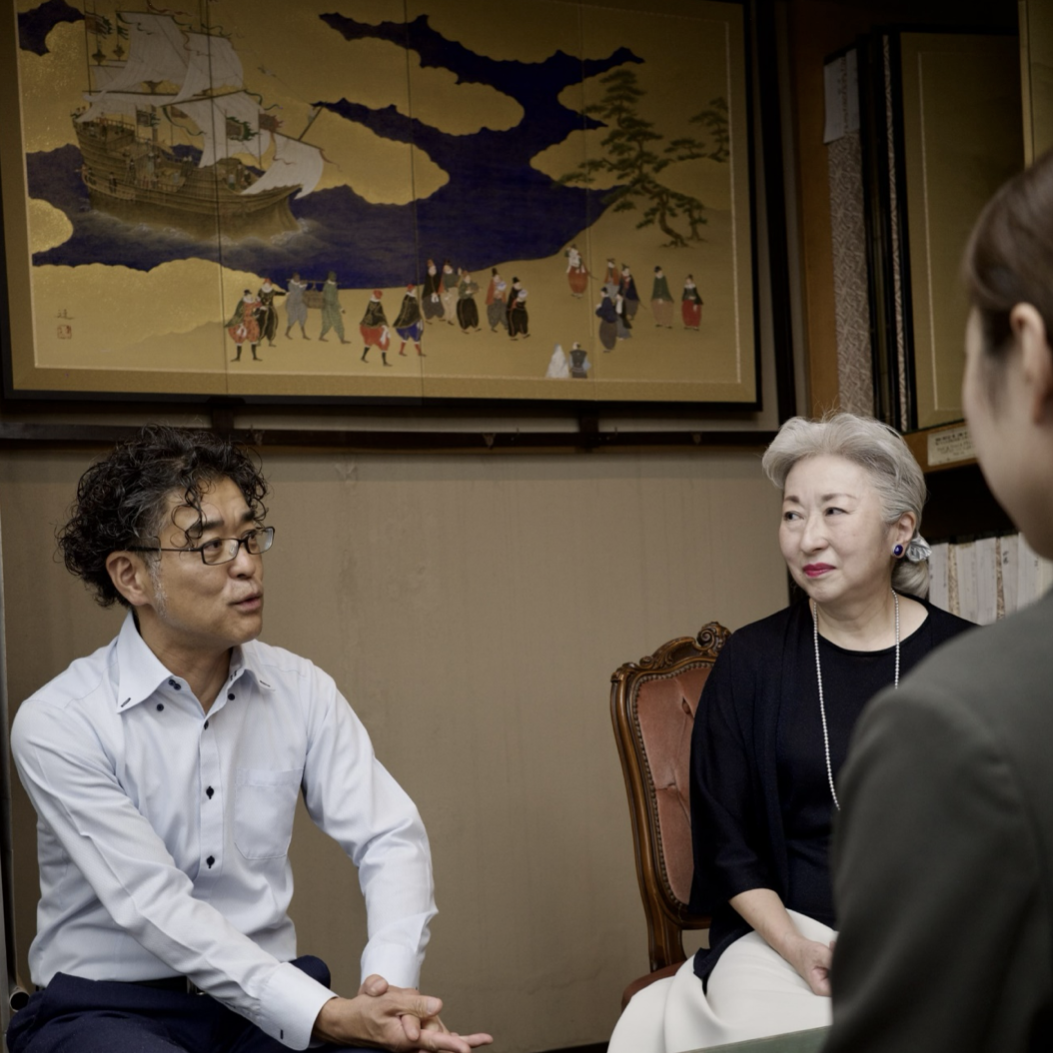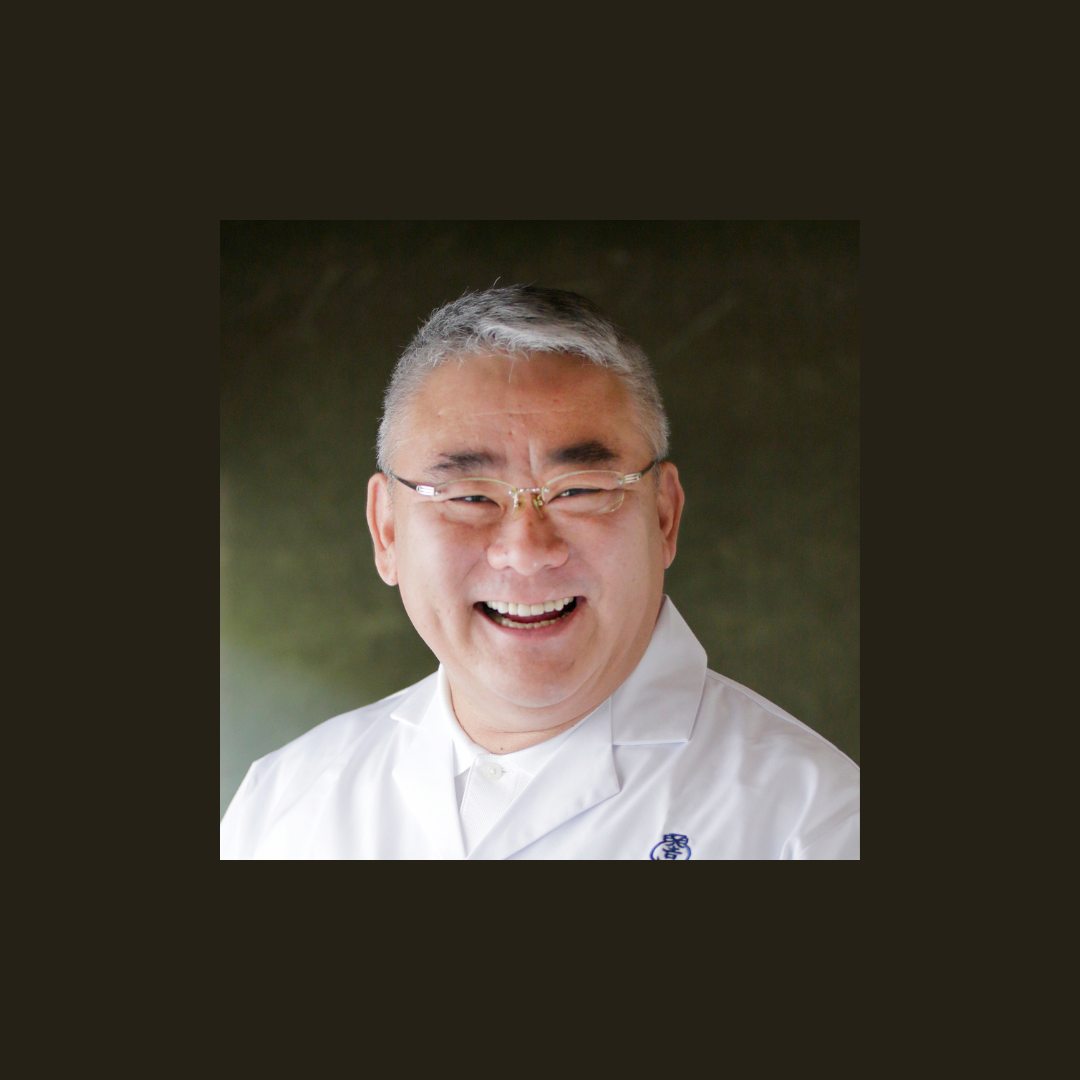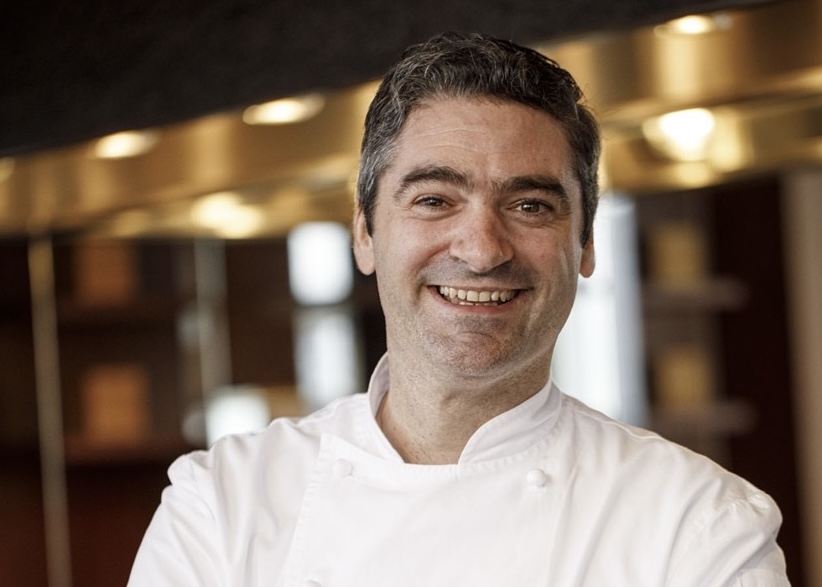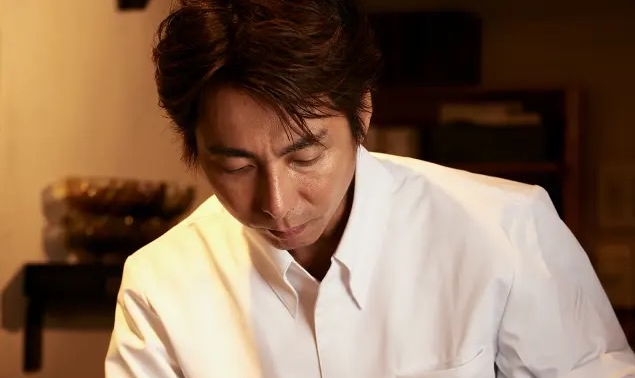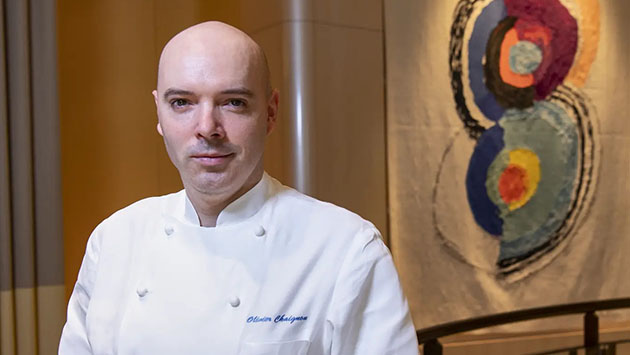Yoshiaki Yamada
Kutani Ware Artist
The Akaito Art Collection is to introduce the history and culture of saffron in Japan through the saffron-themed art pieces. We are very fortunate to have Mr. Yoshiaki Yamada, a leading expert on Kutani ware Japanese porcelain, collaborating with us, thanks to the introduction by the art dealer, Fuji Torii. We interviewed Mr. Yamada about his passion for Kutani ware and this project. (Akaito, Yukina Owashi)

Yoshiaki Yamada, Kutani ware artist
Born in Ishikawa Prefecture in 1948. He has received many awards, and his works have been purchased by the Imperial Household Agency six times. In 2020, he was awarded the Order of the Sacred Treasure, Silver Rays. He holds many positions and titles – the regular member of the Japan Crafts Association, the advisor to the Creative Art Association, the certified traditional craftsman, the lecturer at the Ishikawa Prefectural Kutaniyaki Technical Training Institute, and the member of the Ishikawa Prefecture Designated Intangible Cultural Property Kutaniyaki Technical Preservation Society.

Commitment to hand-painted works based on sketches
Mr. Yamada, born in 1948, is one of Japan’s leading Kutani-yaki artists of color painting. His art has been highly recognised by the Order of the Sacred Treasure, Silver Rays, the multiple purchase by Imperial Household Agency, and with various awards. His career as an artist began by following in the footsteps of his father, who was a craftsman. In those days, mass production with stamps was the mainstream in Kutani ware. However, at the age of 26, Mr. Yamada took a leap of faith and began to study hand-drawing. Later, under the guidance of two masters, he was more and more interested in hand-drawing and its appeal as a form of artwork, and immersed himself in the creation of hand-drawn works.
Mr. Yamada’s unique creation of Kutani ware is focused on “sketching, composing, and painting.” The composition is an important part of the creation, and it involves detailed consideration, ending up drawing many drafts. It involves a lot of challenges, but once his arm starts to move, he enjoys it and he is concentrated to complete in one go. In fact, he had seven or eight compositions drawn in his studio for a single work.
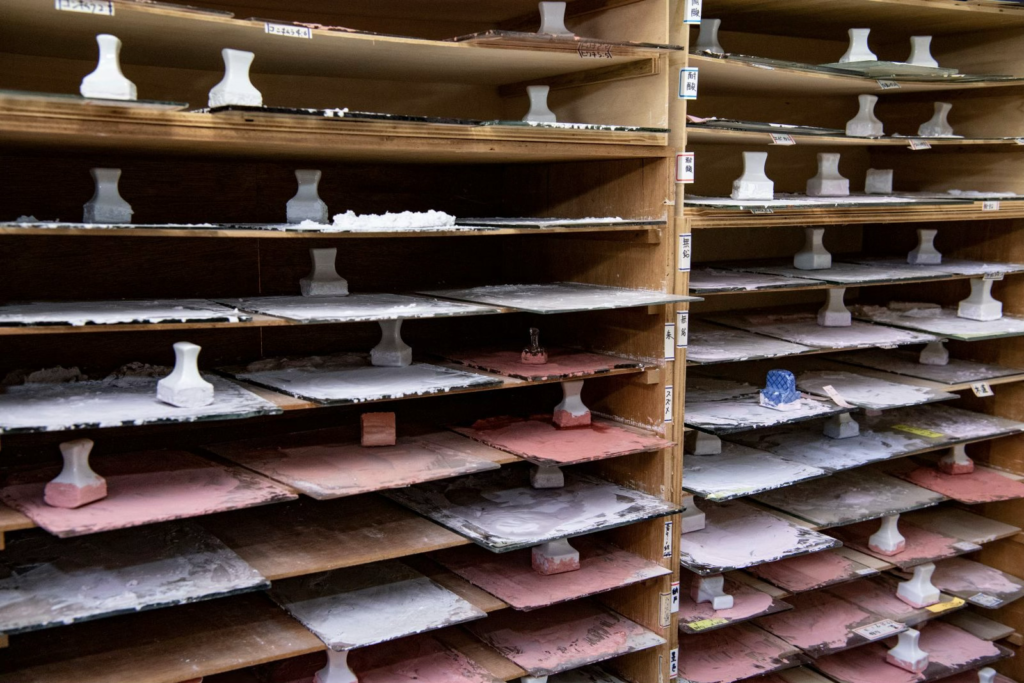
Charm of Kutani Ware
Mr. Yamada cited the appeal of Kutani ware as the ability to create a variety of colors by mixing them from the basic five colors (green, yellow, purple, dark blue, and red). The number of colors can be doubled through the techniques of the blue-Kutani and red-painting. In addition, the use of Japanese and Western paints can make the color areas more three-dimentional, and when touching the works, I could certainly feel the bumps of the paints.
He also told that attractive Kutani ware should use the margin effectively. He says that by improving one’s skill, one can develop the sensitivity to recognize good and bad margins.
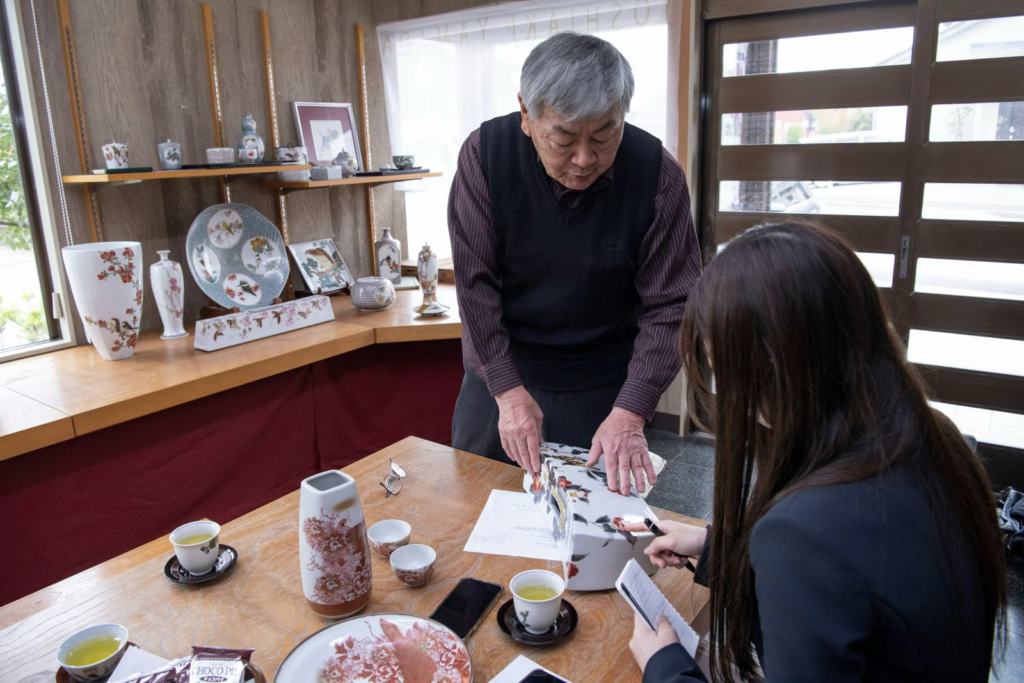
Creating the saffron-themed collection
At first, he found it very difficult to create the saffron-themed pieces, because he did not have much opportunities to see actual saffron flowers. For the artist who values sketching the natural objects on his own, this was a critical barrier. He only had once found naturally grown saffron in his garden and has sketched before. Also, saffron is small, so it is easier to balance it in a small piece. However, this time he took the challenge to create a series, from small pieces like teacups to large plates.
When people appreciate this collection, Mr. Yamada hopes viewers to think about saffron itself rather than his own works. We would like to thank Mr. Yoshiaki Yamada once again for his efforts in creating so many wonderful works using the unusual motif of saffron. We wish him and Kutani ware in Japan to be continued success in the future.
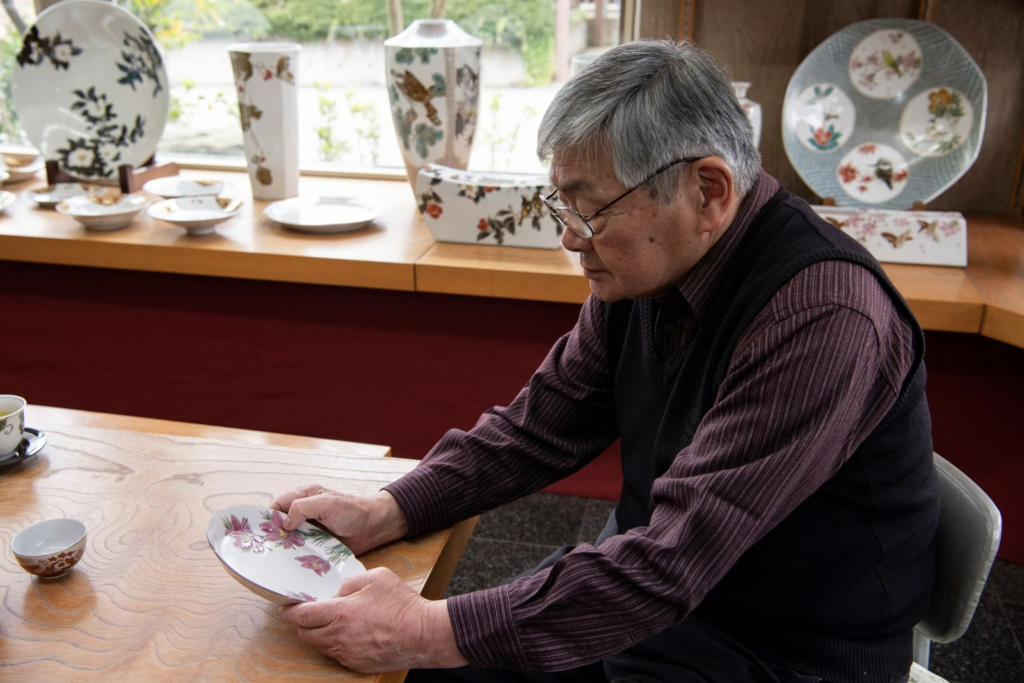
[Postscript] This interview was conducted in 2023, when we were finally recovering the Covid-19 pandemic. Then on January 1, 2024, the Noto Peninsula earthquake occurred. We contacted Mr. Yamada after that and were relieved to hear that, fortunately, the earthquake did not cause major damages for him. Once again, we would like to express our deepest sympathies to the people affected by the Noto Peninsula earthquake, and we continue to pray for the earliest possible recovery of the affected areas.
